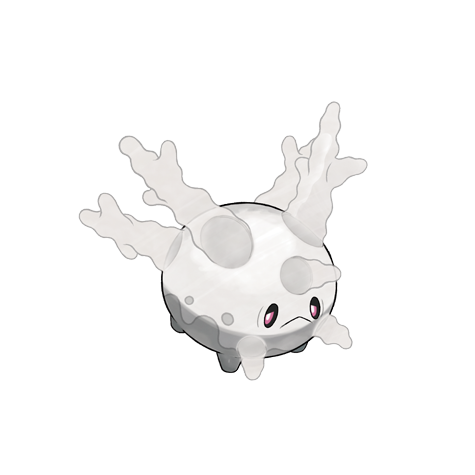Corsola Species
Attributes
- Base Happiness: 70
- Capture Rate: 60
- Color: Pink
- Egg Groups:
Water1
,
Water3
- Gender Rate: 6
- Hatch Counter: 20
- Has Gender Differences: False
- Is Baby: False
- Is Legendary: False
- Is Mythical: False
- Shape: Armor
- Generation: Generation-Ii
Corsola Varieties

#222
Corsola
Types: Water, Rock

#222
Corsola-Galar
Types: Ghost
Flavor Text Entries
-
Gold: It continuously sheds and grows. The tip of its�head is prized as a treasure for its beauty.
-
Silver: In a south sea nation, the people live in communi�ties that are built on groups of these POKéMON.
-
Crystal: The points on its head absorb nutrients from�clean water. They cannot survive in polluted water.
-
Ruby: CORSOLA’s branches glitter very beautifully in seven colors when they catch sunlight.�If any branch breaks off, this POKéMON grows it back in just one night.
-
Sapphire: Clusters of CORSOLA congregate in warm seas where they serve as ideal hiding places for smaller POKéMON.�When the water temperature falls, this POKéMON migrates to the southern seas.
-
Emerald: CORSOLA live in warm southern seas. If the sea becomes polluted, the beautiful coral stalks become discolored and crumble away in tatters.
-
Firered: In a south sea nation, the people live in communities that are built on groups of these POKéMON.
-
Leafgreen: It continuously sheds and grows. The tip of its head is prized as a treasure for its beauty.
-
Diamond: Many live in the clean seas of the south. They apparently can’t live in polluted waters.
-
Pearl: Many live in the clean seas of the south. They apparently can’t live in polluted waters.
-
Platinum: Many live in the clean seas of the south. They apparently can’t live in polluted waters.
-
Heartgold: It continuously sheds and grows. The tip of its head is prized as a treasure because of its beauty.
-
Soulsilver: In a south-sea nation, the people live in communities that are built on groups of these Pokémon.
-
Black: Many live in the clean seas of the south. They apparently can’t live in polluted waters.
-
White: Many live in the clean seas of the south. They apparently can’t live in polluted waters.
-
Black-2: They prefer unpolluted southern seas. Their coral branches lose their color and deteriorate in dirty water.
-
White-2: They prefer unpolluted southern seas. Their coral branches lose their color and deteriorate in dirty water.
-
X: It continuously sheds and grows. The tip of its head is prized as a treasure because of its beauty.
-
Y: They prefer unpolluted southern seas. Their coral branches lose their color and deteriorate in dirty water.
-
Omega-Ruby: Corsola’s branches glitter very beautifully in seven colors when they catch sunlight. If any branch breaks off, this Pokémon grows it back in just one night.
-
Alpha-Sapphire: Clusters of Corsola congregate in warm seas where they serve as ideal hiding places for smaller Pokémon. When the water temperature falls, this Pokémon migrates to the southern seas.
-
Sun: Coral branches grow from its head. They break off quite easily, but they grow back in about three days.
-
Moon: Pursued by Mareanie for the branches on its head, this Pokémon will sometimes snap its own branches off as a diversion while it escapes.
-
Ultra-Sun: The pink of Corsola that live in Alola is deep and vibrant, thanks to seas filled with nutrition.
-
Ultra-Moon: In Alola, where their natural enemies Mareanie are plentiful, many Corsola have stubby branches on their heads.
-
Sword: It will regrow any branches that break off its head. People keep particularly beautiful Corsola branches as charms to promote safe childbirth.
-
Shield: These Pokémon live in warm seas. In prehistoric times, many lived in the oceans around the Galar region as well.